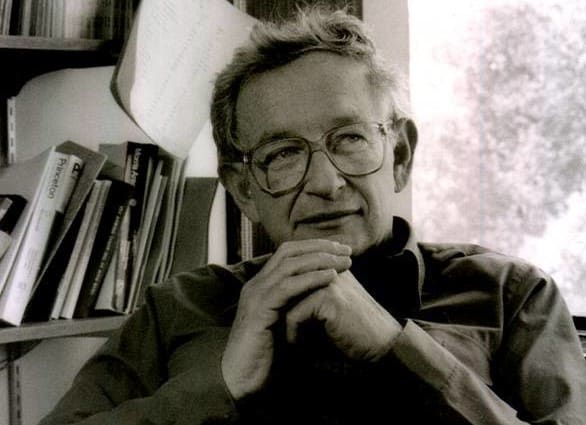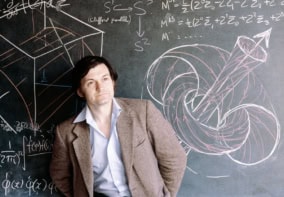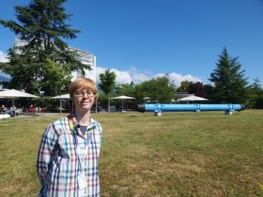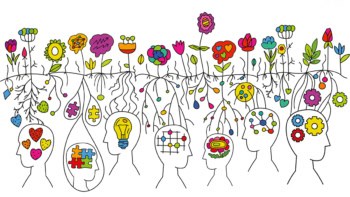
The US condensed-matter physicist Philip Warren Anderson died yesterday aged 96. One of the most celebrated condensed-matter physicists of his generation, Anderson’s theoretical research into the electronic structure of magnetic and disordered systems led to an improved understanding of metals and insulators. For this work he was awarded the Nobel Prize for Physics in 1977, which he shared with the British physicist Sir Nevill Mott and the US physicist John Hasbrouck van Vleck.
Born on 12 December 1923 in Indianapolis, Indiana, Anderson was raised in Illinois, where his father taught plant pathology at the University of Illinois in Urbana. In 1940, Anderson went to study physics at Harvard University but during the Second World War was drafted to work at the US Naval Research Laboratory, spending the period from 1943 to 1945 researching antenna design. He then returned to Harvard working on a PhD under the supervision of van Vleck, graduating in 1949.
Anderson then joined Bell Telephone Laboratories in New Jersey, which was part of the telecoms firm AT&T. It was there that he developed his theory of the electronic structure of solids.
Much of what we know about the electronic properties of metals and semiconductors is based on the idea that electrons with certain momenta can travel freely through a crystalline lattice, while others cannot. This is embodied in Felix Bloch’s 1928 quantum theory of conduction, which describes the lattice as a periodic electric potential through which some electrons (behaving as “matter waves”) diffract with ease. In the 1960s, Anderson worked out what would happen in such a system if the potential lost its periodicity. This could happen, for example, if the lattice remained periodic, but the potential has a different value at each lattice site.
Anderson found that electrons would be unable to move through such a “disordered” lattice, and instead become trapped by specific atoms. If the disorder is sufficiently strong, the electrons cannot form an electric current due to destructive interference between different scattering paths. Instead, they become localized and unable to propagate in space.
For this prediction of what became known as “Anderson localization” he was awarded the 1977 Nobel Prize for Physics, which he shared with van Vleck and Mott for their “fundamental theoretical investigations of the electronic structure of magnetic and disordered systems”. Anderson localization has since been seen in several systems including those based on light, microwaves and in atoms held in a Bose–Einstein condensate.
A ‘wonderful’ lab
The 1960s was a particularly productive time for Anderson. He also worked on the theory of superconductivity, in which the electrons in a material can flow without resistance, and explored the properties of helium-3. In 1967, Anderson spent eight years on a part-time basis at the University of Cambridge before returning to the US to work at Princeton in 1975, while still being affiliated to Bell Labs.
Anderson retired from Bell Labs in 1984 when the US government disbanded AT&T and began working full-time at Princeton where he continued his research on spin glasses – nonmagnetic metals embedded with randomly spaced magnetic elements – as well as high-temperature superconductors.
In an interview with Physics World in 2006, Anderson said that he mostly enjoyed his 35 years at Bell Labs. “For the first three decades it was the most wonderful laboratory in the world,” he said. “We had freedom, an enlightened management and a personnel department that never had any say in the direction of the research department. We had a very high opinion of ourselves, but it was justified. Those were the years when we invented modern technology.”
The ‘arrogance’ of particle physics
Anderson also made crucial contributions to other fields in physics. In particular, in 1962, he published a now-famous paper on how the photon acquires mass. It was cited two years later by Peter Higgs in his own paper on the discovery of a mechanism for understanding the origin of mass – a theory for which Higgs and François Englert won the 2013 Nobel Prize for Physics. The mechanism was later confirmed by the discovery of the Higgs boson at CERN’s Large Hadron Collider in 2012.
While Anderson had noted that the Higgs boson could have been called the “Anderson–Higgs boson” in recognition of his work, in 2013 he told Physics World that the Swedish Academy made “a perfectly reasonable decision” to award the prize to Higgs and Englert. “I also think the fuss over the theoretical part of the work a bit excessive relative to the gigantic experimental effort,” he added. Freeman Dyson: unorthodox to the end
In the late 1980s, Anderson was a vocal critic of the $4.4bn Superconducting Super Collider (SSC), which the US was planning to build in Waxahachie, Texas, as the next big machine in particle physics. In 1987, Anderson famously gave testimony to the US Senate, in which he worried that the huge costs of the 87.1 km circumference circular collider would force cuts to other science budgets. He was far from the only physicist who had such concerns and, despite some $2bn eventually being spent on digging parts of the SSC’s underground tunnel and constructing various buildings, the collider was cancelled in 1993, by which time the project’s estimated final price tag had almost trebled to $12bn.
Indeed, Anderson held a sceptical view of particle physics and the belief in the field by some that it deserved more funding that other areas. “There is a great arrogance and immodesty about that whole field, which gets on my nerves,” he told Physics World in 2006. “Particle theorists say [they’re] discovering ‘the mind of God’. It’s not the mind of God at all. In the first place, there’s no God, and in the second place, particle physics cannot explain things like superconductivity, life and consciousness. It makes no contribution to explaining how the world actually works.” He also held the view that particle theorists owe more than they realize to condensed-matter theorists like himself, particularly for having developed the concept of “broken symmetry” in the 1950s.
Emergent views
During his career, Anderson wrote several scientific books, including Concepts of Solids, Basic Notions of Condensed Matter Physics (1997) and More and Different (2012). He also contributed to the philosophy of science, writing a now famous article “More is Different” for Science in 1972. This set out the limitations of “reductionism”, according to which all of science can, in theory, be derived from just a few fundamental principles.
Anderson instead believed in “emergence”, which states that everything we observe at one level obeys the laws at a more primitive level, but that those observations cannot necessarily be deduced from that level. He even dubbed it the “God principle” but told Physics World that it did not reflect any religious beliefs. “I’m not quite as atheistic as [Oxford biologist] Richard Dawkins, but I’m very close,” he said.
Anderson received the National Medal of Science in 1982 and was involved with the formation of the interdisciplinary Santa Fe Institute, which explores the science of complexity. He joined as an emeritus professor in 1985 and in 1996 Anderson became an emeritus professor at Princeton.
Indeed, Anderson remained active as a physicist well into his 80s and 90s, even being named as the “world’s most creative physicist” by one statistical analysis in 2006. He continued to review books, including a review for Physics World in 2013 of a biography of his near-contemporary Freeman Dyson, who died in February. His last letter to Physics World was published in 2017.
Outside physics, Anderson was a keen hiker and gardener as well as an enthusiast of the Chinese board game Go where he was a certified “first-degree master”.



